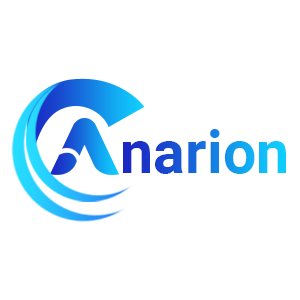Wagtail VM by Anarion Technologies
Wagtail is a robust and flexible open-source content management system (CMS) built on the Django web framework. Designed with both developers and content editors in mind, Wagtail offers a comprehensive set of features that make managing complex websites and applications straightforward.
Its admin interface is known for its user-friendly design, allowing content editors to efficiently create and organize content with ease. Wagtail provides a rich set of tools for developers, including a highly customizable templating system and powerful API integrations.
One of Wagtail’s standout features is its support for hierarchical page structures and its built-in content management tools, which make it ideal for handling content-heavy websites. It also includes a flexible image and document management system, robust workflow capabilities, and advanced search functionality.
Wagtail is designed to be scalable and performant, making it suitable for both small projects and large enterprise applications. Its open-source nature means that it benefits from a vibrant community of contributors who continuously enhance its functionality and security. Overall, Wagtail is a versatile CMS that combines ease of use with powerful capabilities, catering to a wide range of web development needs.
To subscribe to this product from Azure Marketplace and initiate an instance using the Azure compute service, follow these steps:
1. Navigate to Azure Marketplace and subscribe to the desired product.
2. Search for “virtual machines” and select “Virtual machines” under Services.
3. Click on “Add” in the Virtual machines page, which will lead you to the Create a virtual machine page.
4. In the Basics tab:
- Ensure the correct subscription is chosen under Project details.
- Opt for creating a new resource group by selecting “Create new resource group” and name it as “myResourceGroup.”
5. Under Instance details:
- Enter “myVM” as the Virtual machine name.
- Choose “East US” as the Region.
- Select “Ubuntu 18.04 LTS” as the Image.
- Leave other settings as default.
6. For Administrator account:
- Pick “SSH public key.”
- Provide your user name and paste your public key, ensuring no leading or trailing white spaces.
7. Under Inbound port rules > Public inbound ports:
- Choose “Allow selected ports.”
- Select “SSH (22)” and “HTTP (80)” from the drop-down.
8. Keep the remaining settings at their defaults and click on “Review + create” at the bottom of the page.
9. The “Create a virtual machine” page will display the details of the VM you’re about to create. Once ready, click on “Create.”
10. The deployment process will take a few minutes. Once it’s finished, proceed to the next section.
To connect to the virtual machine:
1. Access the overview page of your VM and click on “Connect.”
2. On the “Connect to virtual machine” page:
- Keep the default options for connecting via IP address over port 22.
- A connection command for logging in will be displayed. Click the button to copy the command. Here’s an example of what the SSH connection command looks like:
“`
ssh azureuser@10.111.12.123
“`
3. Using the same bash shell that you used to generate your SSH key pair, you can either reopen the Cloud Shell by selecting >_ again
or going to https://shell.azure.com/bash.
4. Paste the SSH connection command into the shell to initiate an SSH session.
Usage/Deployment Instructions
Anarion Technologies – Wagtail
Note: Search product on Azure marketplace and click on “Get it now”
Click on Continue
Click on Create
Creating a Virtual Machine, enter or select appropriate values for zone, machine type, resource group and so on as per your choice.
After Process of Create Virtual Machine. You have got an Option Go to Resource Group
Click Go to Resource Group
Copy the Public IP Address
SSH into Terminal and Run these following Commands:
$ sudo su
$ sudo apt update
$ cd wagtailproject/
$ source venv/bin/activate
$ cd mysite/
Run database migrations:
$ python manage.py migrate
Create an admin user:
$ python manage.py createsuperuser
Start the development server:
$ python manage.py runserver 0.0.0.0:8000
Open your browser and go to the server’s URL. In my case it’s https://server-ip:8000
You should see the Wagtail welcome page. It should look similar to the one below:
You can then access the Wagtail admin page and log in with your admin user at the following URL: http://server_domain_or_IP:8000/admin
That should prompt you for the superuser account and password:
When you log in successfully, you will see a beautiful dashboard where you can add your content.
ThankYou!!!
All your queries are important to us. Please feel free to connect.
24X7 support provided for all the customers.
We are happy to help you.
Contact Number: +1 (415) 800-4585
Support E-mail: support@anariontech.com


